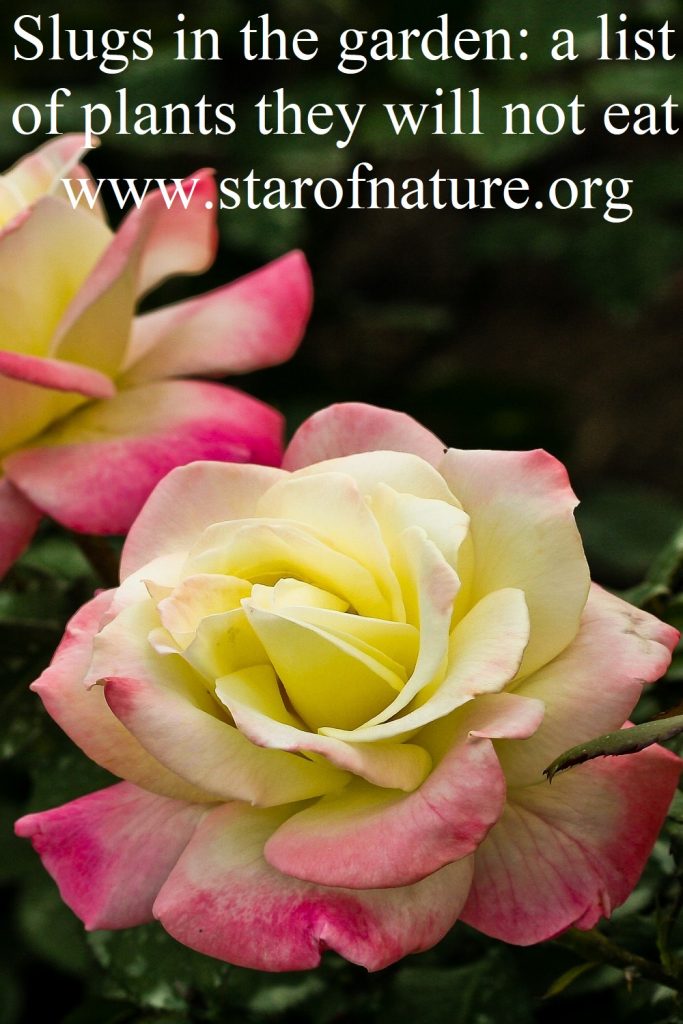Slugs in the garden: a list of plants they will not eat
What to plant if you have slugs in the garden, but not the time or desire to fight them? Fortunately, there are plenty of plants that slugs do not eat and that will flourish in spite of their virtually unavoidable presence. Such plants are much more common than people assume and include many garden favourites.
Plants that slugs do not eat: perennials
Rose
Roses come in a great variety of colours and shapes, and are entirely invulnerable to slugs. Growers compete to create cultivars suitable for modern organic gardening that can be easily combined with other plants and are resistant to fungal diseases. And they have been very successful: recently introduced cultivars are beautiful, heathy and resilient.
There are varieties, particularly among climbing roses, that are both highly decorative and good for wildlife. Their numerous semi-double flowers produce nectar, pollen and berries in autumn.
Pinks, carnations and sweet Williams
There is a great range of decorative cultivars. The petals of pinks are edible and can be added to summer salads. Sweet Williams can grow and flower well in partial shade, as long as the soil is fertile and not too dry.
Lysimachia
Surprisingly undemanding, and tolerates shade and dryness very well. Looks beautiful the entire season and flowers for 3-4 weeks in July.
Gypsophila
A great favourite with florists and flower arrangers.
Stachys
There are many garden varieties, including Stachys byzantina with silver downy leaves and Stachys officinalis, with bright pink flowers loved by bees.
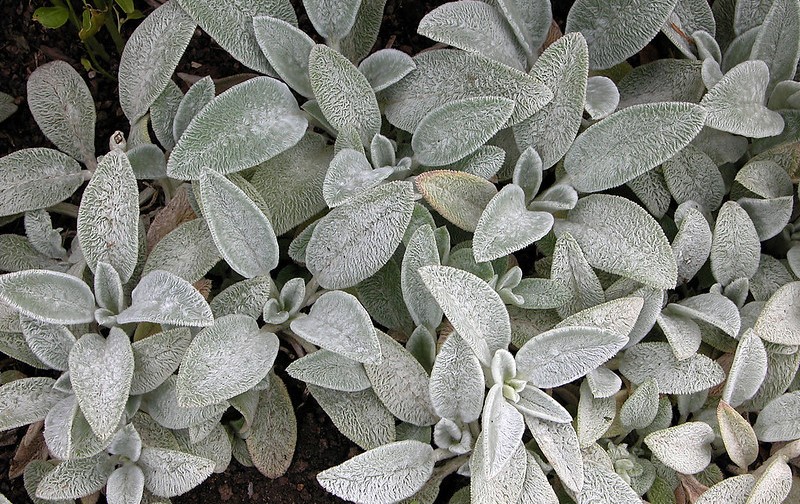
Lily-of-the-valley
A graceful flower with a most wonderful scent. Apparently a favourite of Elizabeth II, the Queen of the United Kingdom. Grows well in both sun and shade. Spreads quickly in fertile soil.
Veronica (Speedwell)
There are numerous garden varieties of veronica. Wild Veronica chamaedrys is a wonderful low-growing plant for a natural lawn. It is densely covered with sky-blue flowers for several weeks in May and June.
Veronica spicata, commonly sold as a garden plant, is spectacular and loved by bees.
Salvia
Probably the most commonly cultivated salvia is sage, an easy-to-grow herb and a favourite with chefs. There are also many decorative salvias. They are some of the most pollinator-friendly garden flowers. They bloom for weeks in June and July, and are constantly visited by bumble bees and honeybees.
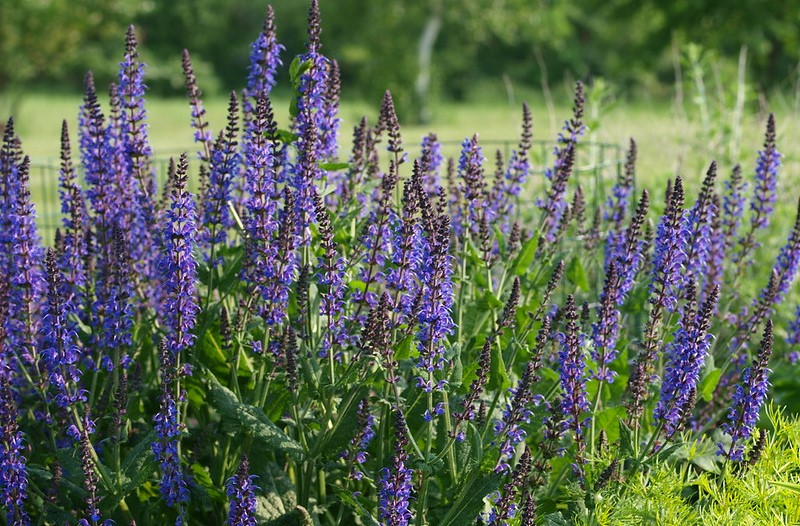
Anemone
Both early-flowering bulbs and late flowering perennials are immune to slugs in the garden. Perennials, known as Japanese anemones are tall and flower in late August and September. They are the stars of an autumn garden. Recent cultivars have strikingly elegant flowers in all shapes of white and pink.
Hemerocallis (Daylily)
A quickly spreading and very easy to grow plant. There are many varieties with large, exotic-looking flowers in numerous shades of red, yellow and white.
Aquilegia (Columbine)
A graceful plant that comes in a wide range of colours. Self-seeds very easily and once introduced in the garden is likely to stay.
Lavender
A beautiful plant for a sunny position. Looks wonderful grown in a pot or planted in groups. Very attractive to bees and butterflies.
Sedum
Grows best in full sun. Flowers in autumn and is an important food source for bees and butterflies late in the season.
Geum (Avens)
Modern cultivars have large, showy flowers and bloom for a long time in May and June.
Astrantia (Masterwort)
Grows well in partial shade, as long as the soil is fertile and relatively moist. A favourite with florists.
Penstemon
A strikingly beautiful plant. There are numerous cultivars with bell-like flowers in different shades of pink, purple and white.
Alchemilla (Lady’s mantle)
A beautiful ground-cover plant. Grows best in full sun, in fertile, moist soil.
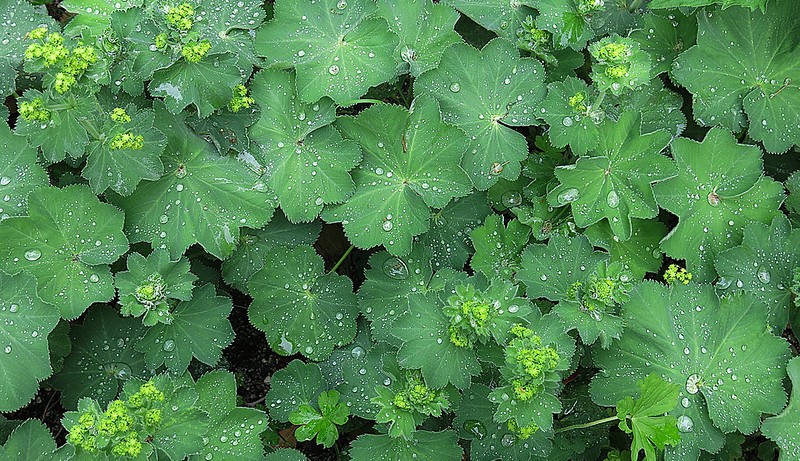
Astilbe
A beautiful plant for wet soil. Often grown in the margins of ponds and other water-logged areas.
Heuchera
Comes in many striking colours, including salad-green, dark yellow, deep red and almost black. Looks great the entire season.
Muscari (Grape hyacinth)
A hardy early-flowering bulb. Spreads very quickly in fertile soil.
Snakehead fritillary
One of the most striking spring flowers. Prefers fertile, most soil, but is generally undemanding and easy to grow.
Achillea (Yarrow)
Requires full sun to do well. Attracts bees and butterflies. Modern cultivars come in deep yellow, red and pink colours and are strikingly beautiful.
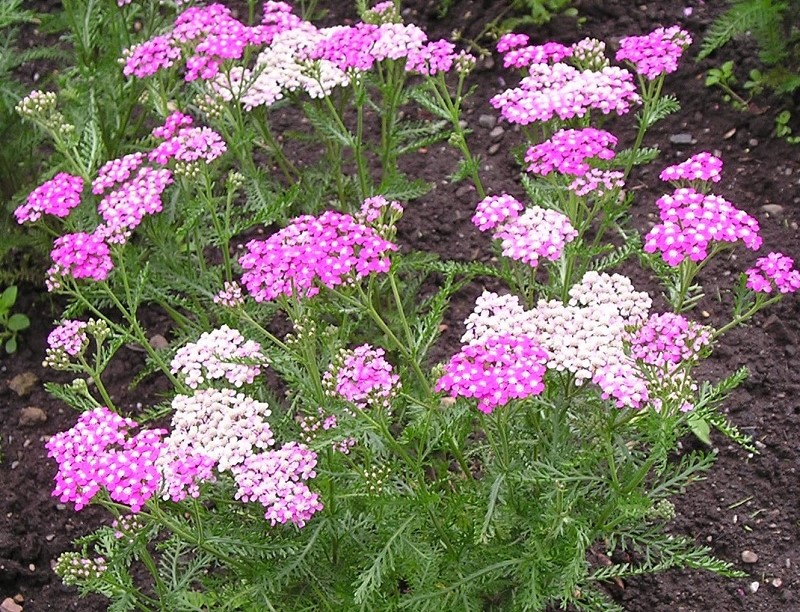
Fuchsia
Prefers fertile, most soil and sun. There are many beautiful varieties that flower endlessly in the summer and early autumn. Many are tender and are best kept frost-free in winter.
Centaurea (Knapweed)
Both wild and garden varieties are strikingly beautiful. They require full sun and are loved by bees and butterflies.
Geranium (Crane’s-bill)
Easy to grow and loved by bees and butterflies.
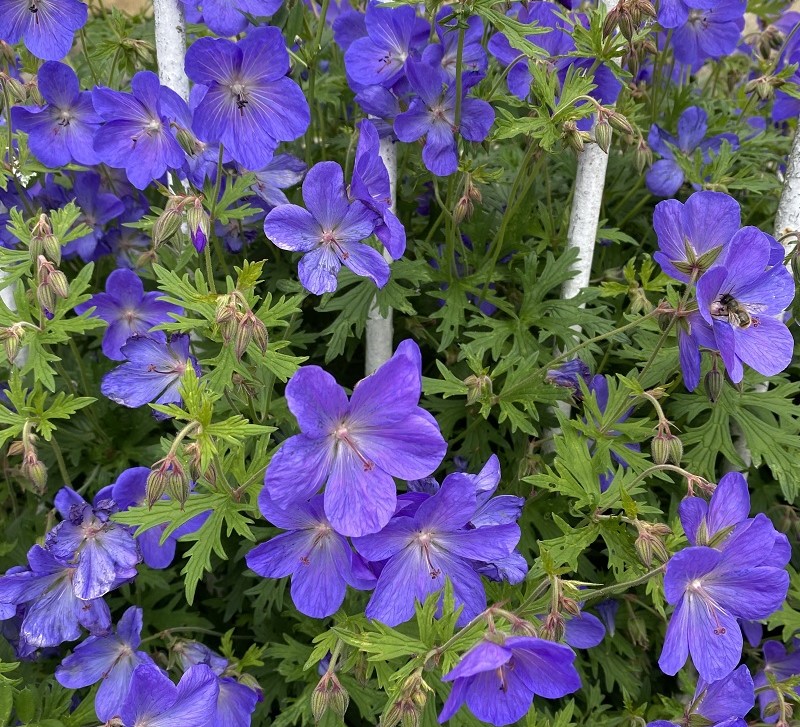
Pelargonium
There is a great variety of decorative cultivars. Evocative, has a cottage garden, antique, traditional feel.
Elecampane
An unusual and beautiful ‘statement’ plant. Resembles a sunflower and is loved by bees.
Campanula (Bellflower)
I had Campanula punctata damaged by slugs, but other campanulas, including Campanula persicifolia, Campanula lactiflora and Campanula glomerata are entirely invulnerable and can be grown without protection. They are some of the most beautiful plants for the garden and there are numerous decorative cultivars.
Euphorbia
Very adaptable and easy to grow. Flowers of many varieties are attractive to bees.
Ornamental grasses
Elegant and variable in texture and colour. Loved by garden designers.
Plants that slugs do not eat: annuals, biennials and summer bedding
Foxglove
Loved by bees, flowers for weeks and, as a woodland plant, tolerates shade. Self-seeds easily, and once introduced into a garden, will keep reappearing.
Feverfew
Beautiful flowers and bright, salad-green leaves. Tolerates shade and dryness, self-seeds prolifically.
Cornflower
Beautiful and comes in numerous shades of blue, white, pink and purple. Loved by bees and other pollinators. Very easy to grow from seed.
Nasturtium
There are compact and climbing varieties. Large yellow and red flowers of nasturtium are loved by bees. The leaves and flowers are edible and an excellent addition to summer salads. Young seeds are often pickled as an alternative to capers. Very easy to grow from seed.
Busy Lizzie (Impatience)
Shade tolerant and requires moist fertile soil. Flowers prolifically throughout the summer. Numerous highly decorative cultivars.
Gazania
Striking tropical-looking flowers in bright shades of yellow and red.
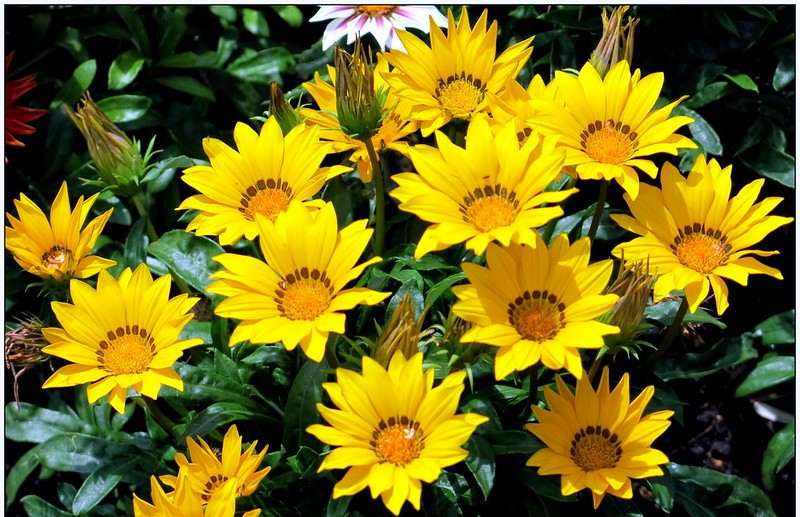
Osteospermum
Comes in a wide range of colours. Flowers for a long time, prefers full sun.
Verbena
Perennials Verbena bonariensis and Verbena rigida are immune to slugs. Their purple flowers are attractive to bees and butterflies. Half-hardy verbena hybrids, commonly grown as annual summer bedding, can be damaged by slugs, though they are not their favourite food.
Portulaca
Very attractive jewel-like flowers. Best grown in full sun.
Begonia
Many strikingly beautiful cultivars, some with massive, very ornate flowers.
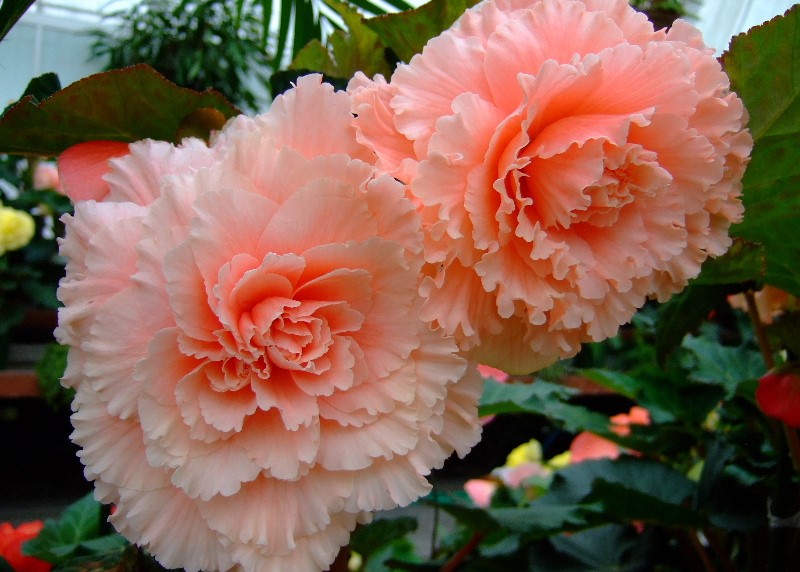
Summer bedding plants less vulnerable to slugs
Some annual flowers are occasionally damaged by slugs, but mostly as a last resort. They are not the slugs’ favorite food and tend to succumb to them only if they are weakened, for example, because of dryness or stress of being replanted. They include lobelia, antirrhinum (snapdragon), alyssum and nemesia.
Which plants do slugs eat?
Unfortunately some garden favourites are very vulnerable slugs. They include delphinium, hosta, lupin, dahlia, petunia, nicotiana, marigolds, sunflowers, cosmos, pansies, zinnia, stocks and annual and perennial asters. These plants require protection. However, as the list above demonstrates, a gardener who simply wants to forget about slugs has plenty of choice.
If you want to grow vulnerable plants, read how to protect them and defeat the slugs naturally, without chemicals.
Image credits: featured image – roses by Sharon Mollerus; Stachys byzantina by Carl Lewis; Salvia ‘East Friesland‘ by F. D. Richards; Achillea millefolium ‘Cerise Queen’ by Anna; gazania by manuel m. v.; begonia by yewchan.
Posts related to ‘Slugs in the garden: a list of plants they will not eat’
Organic garden: how to get rid of slugs without chemicals?
Organic Pest Control: Sanctuaries for Beneficial Insects
How to protect plants from frost damage in spring
Organic Weed Control: Why and How?
Four Types of Organic Plant-based Fertilizers
Green Manures: Vegan and Organic Soil Improvers
Growing Your Own Food: Why Organic is better?
Pin ‘Slugs in the garden: a list of plants they will not eat’
